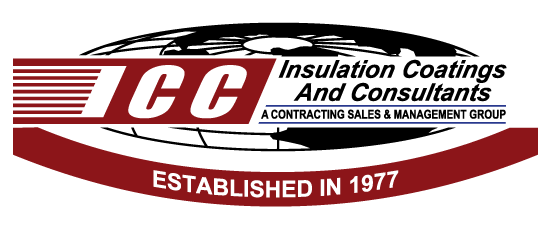
Research/Development
"R" You Getting What You "R" Paying For?
When choosing an insulation, don't just compare the R-values generated under laboratory conditions. "Although the fundamental heat transmission characteristics of a material or system can be determined accurately, actual performance in a structure may vary from that indicated in the laboratory (20.3)." The R-value of mineral fiber insulation (fiberglass and rock-wool) can be particularly deceiving, because of the published R-values are based primarily on conductive heat. "For all types of insulating materials, conduction is not the sole mode of heat transfer (20.3)." "The total conductance is the sum of a component resulting from radiation and a component resulting from convection and conduction combined. These components can vary independently of each other (20.8)."
Mineral fiber insulation manufacturers don't like to test their products for all forms of heat transfer because "The movement of air through an insulation system, either by natural or forced convection, has a deleterious effect on thermal performance (20.2)." "Typical leakage rates in most structures are 6 to 10 air changes per hour (22.7). "Air movement by infiltration through a building envelope must be limited if the space is to be maintained at a condition different from outdoors (21.9)." "Control of infiltration is an important strategy to assure thermal comfort and minimize energy use in buildings (22.7)." Some "insulating materials (Wall Spray Insulation) can reduce air infiltration and provide additional fire resistance and noise control. Insulation also increases interior thermal comfort by controlling interior mean radiant temperatures resulting in more uniform air temperatures, within the enclosure. Proper use of insulation can reduce the size of heating, cooling and ventilating equipment, reducing initial costs as well as annual operating costs (20.14)." "It should not be assumed that leakage through the building envelope occurs primarily at doors and windows where there are visible joints. Studies have shown that leakage attributed to windows and doors constitute only about one-fifth of the total leakage. Leakage cracks and openings in walls and ceilings, especially at intersections, although not as obvious, make a far greater contribution to total leakage. Up to 70% of the total leakage openings were in walls, and up to 67% were through the ceiling, depending on the particular structure (21.9)." "The infiltration of a building is proportional to its leakage area. Reducing the leakage area by 20% reduces the average infiltration of the building by the same percentage (22.16)."
"A 4% void in the insulation of an R-19 ceiling results in an increase of 50% in heat loss.* When thin wall insulation is installed vertically with air spaces on both sides, air interchange around the insulation increases the heat loss by 60% (20.8)." "To attain published or claimed thermal resistance values, it is essential to provide convection and infiltration barriers, to seal cracks in joints and to install insulation so that gaps and voids around and within the materials do not occur. It has been established at that 3% edge gaps (clipping and taping of seams at studs) around insulation can produce 30% loss in effective R-value (20.2)."* "A continuous air infiltration barrier is one of the most effective means of reducing air leakage through walls, around windows and door frames and at joints between major building elements (22.11)."
"Effectiveness can be greatly reduced if openings, even very small ones, exist in the retarder. Such openings can be caused by poor workmanship during application, poorly sealed joints and edges, insufficient coating thickness. Improper caulking and flashing, uncompensated thermal expansion, mechanical forces, aging and other forms of degradation." "Even an excellent vapor retarder is of little benefit if it can be bypassed by a current of air (20.10)." "The function of insulation is clear; it reduces energy loss from a surface operating at a temperature other than ambient.
Optimum use of insulation can:
1. Reduce operating expenditures for energy
2. Improve process efficiency
3. Increase system output capacity or reduce required equipment capacity and
its capital cost
4. Reduce overhead, maintenance, fire and personnel insurance, and other building
expenses. The most important benefit of insulation is the energy conserved
and resulting savings in fuel and power costs (20.10)"
Now, not only must a contractor be up to date with the latest energy efficient designs, but he must also look for safer (new evidence released about fiberglass causing cancer) and better ways to insulate.
*In the average structures being built using batt insulation, it is not uncommon to see 45% total heat loss in walls and 50% in ceilings. These figures do not take into account any loss of R-values due to compression in the cavities, which can add up to an additional 30%.
Note: The above quotations are taken from the American Society of Heating, Refrigeration and Air conditioning Engineers (ASHRAE) 1985 Fundamentals Handbook.
One | Two | Three
| Four
© 2003 Insulation Coatings and Consultants